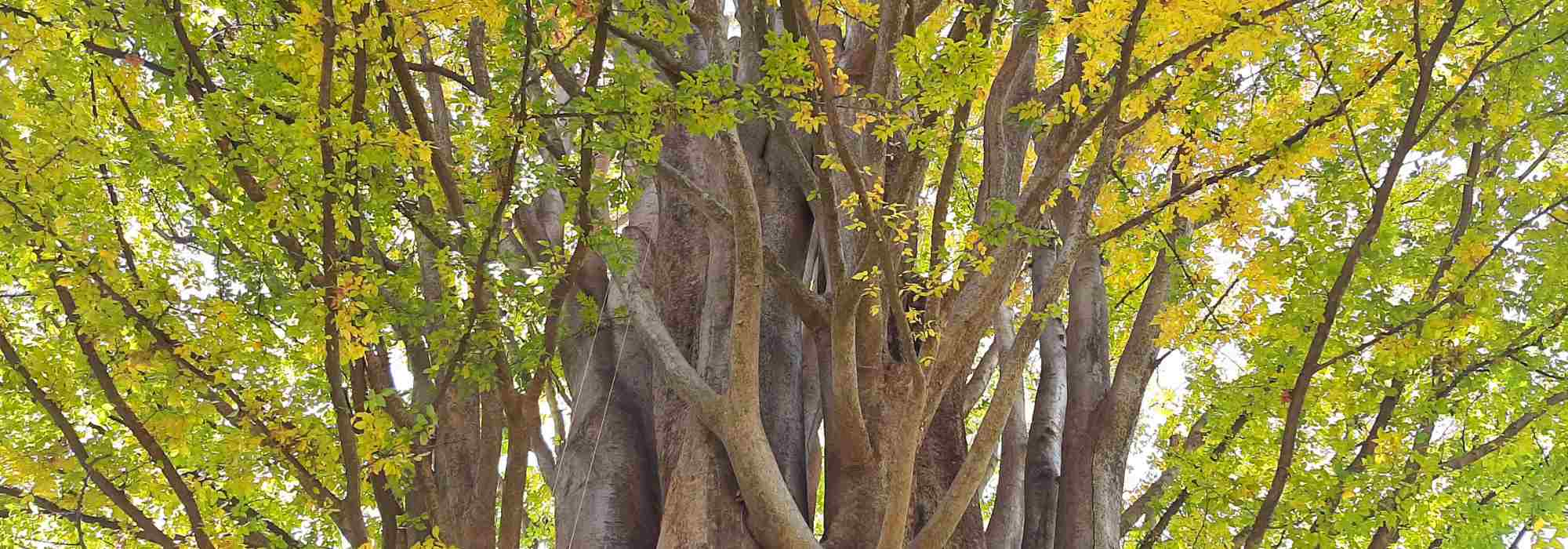
Zelkova - Caucasian elm: planting and caring
Contents
Zelkovas in a nutshell
- The Zelkova is a genus of trees native to East Asia, prized for its hard wood and ornamental beauty.
- It is often used as a shade and avenue tree in parks and gardens.
- The leaves of the Zelkova are deciduous, and the flowers are very inconspicuous…
- … but they produce small drupe-like fruits that ripen in autumn.
- Zelkovas thrive in sunny locations with deep, rich, and moist soil.
The word from our expert
The Zelkova is a genus of trees belonging to the Ulmaceae family. It is native to East Asia and has a long history of cultivation in China, Japan, and Korea, where it is prized for its hard wood and ornamental beauty.
The Zelkova is often used as a shade and avenue tree in parks and gardens due to its elegant silhouette and dense, dark green foliage. The leaves of the Zelkova are deciduous and have an ovate or heart-shaped form, with a slightly rough texture on the upper side and a softer surface underneath.
The flowers of the Zelkova are small and inconspicuous, but they produce fruit in the form of small drupes that ripen in autumn and are often eaten by birds. The wood of the Zelkova is highly resistant and durable, and it is used for making furniture, musical instruments, and other artisanal objects.
There are several species of Zelkova, including the Zelkova serrata or Japanese Elm, which is the most commonly cultivated as an ornamental tree. It is a slow-growing tree that can reach up to 30 metres in height, although it is usually grown as a smaller tree for aesthetic and practical reasons.
In summary, the Zelkova is a popular ornamental tree in East Asia, valued for its elegant silhouette, dense foliage, and hard, durable wood.
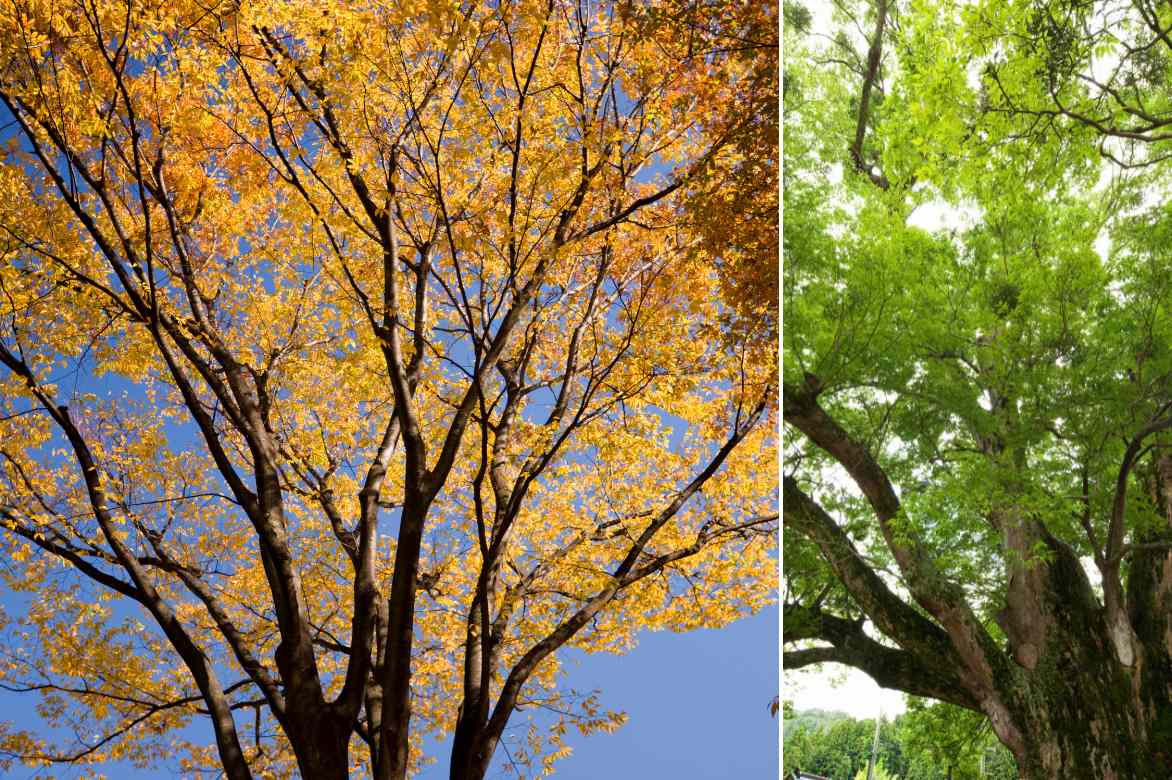
Orange foliage in autumn, and on the right, summer foliage
Botany and description
Botanical data
- Latin name Zelkova spp.
- Family Ulmaceae
- Common name Japanese Zelkova, Japanese or Caucasian Elm
- Flowering April-May
- Height up to 30 m
- Exposure sun
- Soil type deep, rich and moist
- Hardiness -15°C
The genus Zelkova comprises 6 species distributed across the northern hemisphere and belongs to the Ulmaceae family, like the Elm.
- Zelkova serrata or Japanese Zelkova: this is the most common species and the most widely cultivated for ornamental and landscaping purposes. It is native to Japan, Korea, and China.
- Zelkova carpinifolia: also known as Caucasian Zelkova, Caucasian Elm, or Siberian False Elm, it is a native species of southern Europe and western Asia.
- Zelkova sinica, endemic to the northeastern regions of China.
- Zelkova sicula or Sicilian Zelkova, endemic to Sicily (and discovered by chance by students in 1991).
- Zelkova abelicea or Cretan Zelkova, endemic to the island of Crete.
- Zelkova schneideriana, native to China.
- Two additional species of Zelkova, now extinct, can also be mentioned: Zelkova ungeri (Eurasia, a fossil species from the Miocene) and Zelkova nervosa (North America, a fossil species from the Eocene).
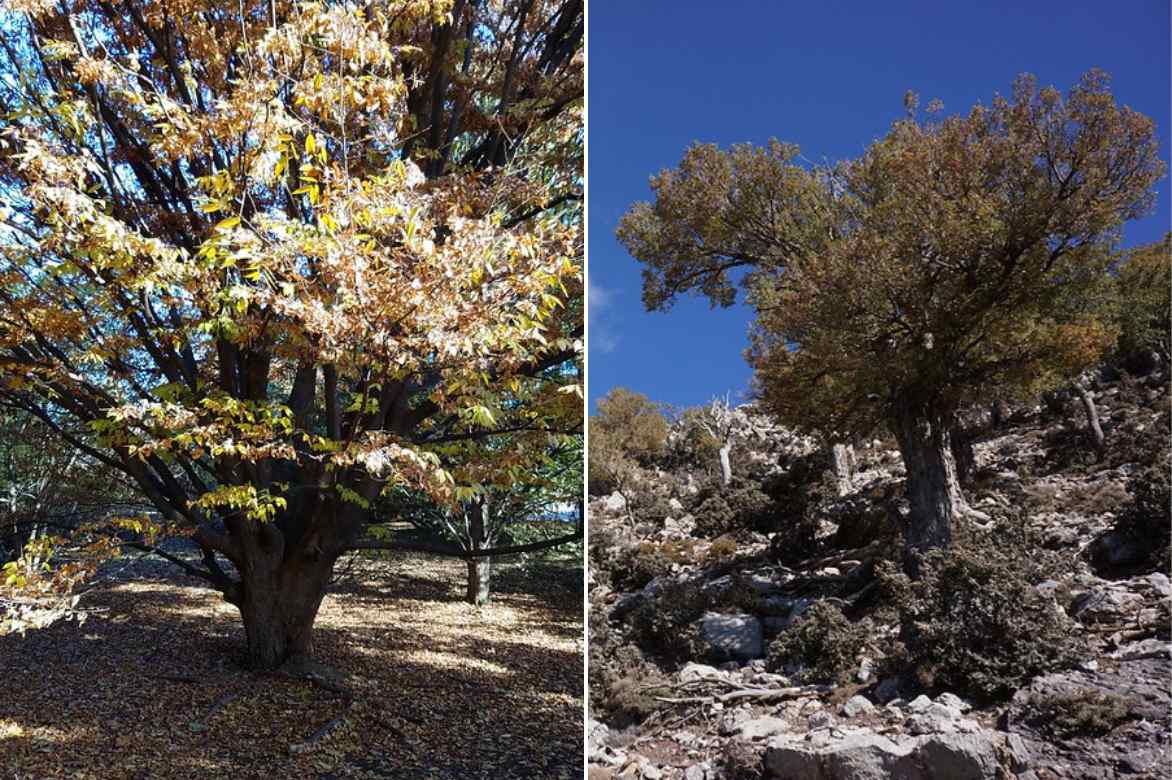
Zelkova serrata on the left (© Dan Deck), and on the right, the Cretan Zelkova or Zelkova abelicea.
Zelkovas typically grow in temperate zones, in well-drained and nutrient-rich soils. Most zelkovas have a pyramidal shape when young, with lower branches that gradually rise as the tree ages. At maturity, the tree’s habit can become more spreading and rounded.
Zelkovas are deciduous trees. The leaves are simple and oval, lanceolate or heart-shaped, with a pointed tip. They generally measure between 3 and 10 cm in length and are finely dentate along the edges. The leaves are dark green and glossy on the upper side and lighter underneath. In autumn, zelkova leaves turn shades of yellow, orange, and red before falling. Additionally, the leaves are arranged alternately on the branches, giving the zelkova branches an airy and elegant appearance.
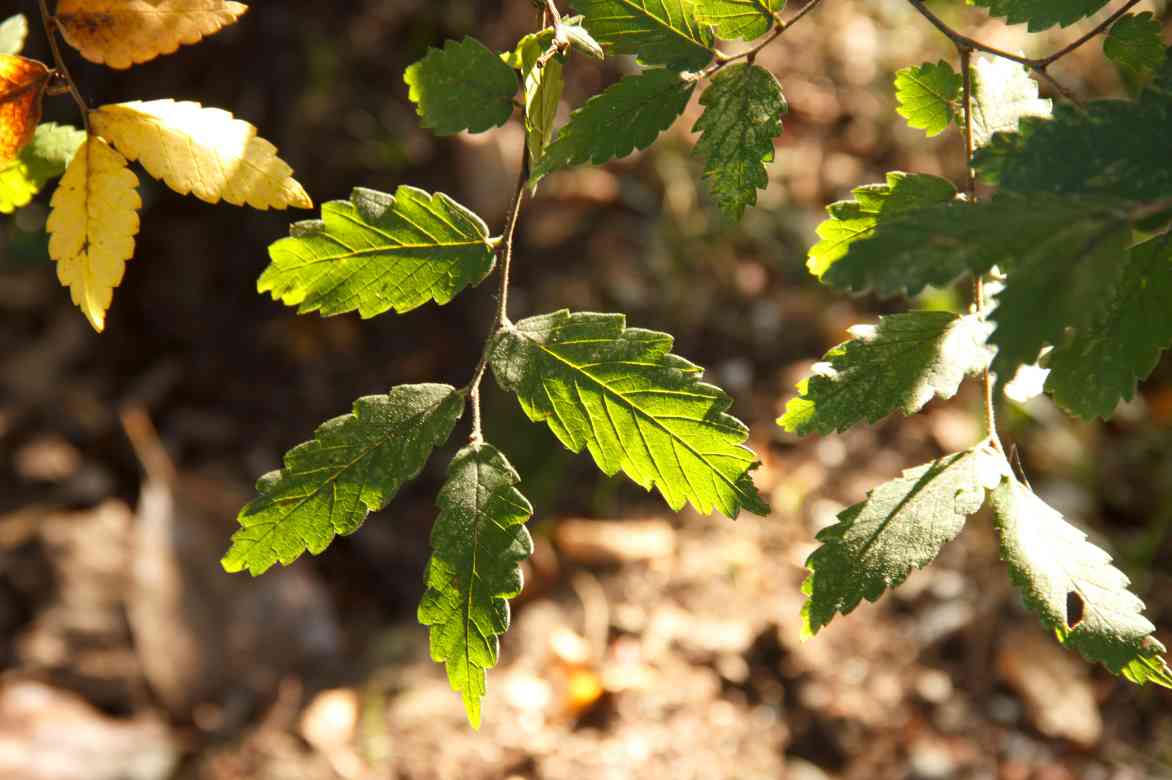
Foliage of Zelkova carpinifolia
Zelkovas are monoecious species, meaning they have both male and female flowers on the same tree. Flowering occurs in early spring, in March or April, before the leaves appear. The flowers are small, green, and inconspicuous, clustered in pendulous clusters along the shoots. Male flowers produce pollen, while female flowers have a small pistil at the centre. Zelkova pollination is wind-driven, as the flowers lack nectar or scent to attract pollinating insects.
After pollination, the female flowers develop into small green drupes that ripen in autumn. The drupes measure about 3 to 5 mm in diameter and contain a single seed. The ripe drupes are light brown and are consumed by birds in winter. These fruits add aesthetic interest to the tree in autumn and provide a food source for wildlife.
Zelkovas are often used for ornamental purposes and landscaping due to their elegant silhouette and dense foliage. Their hard and durable wood is also used for furniture, musical instruments, and other craft items.
Our most beautiful varieties
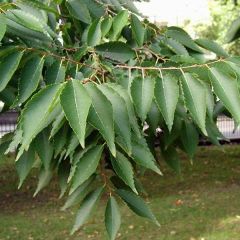
Zelkova serrata
- Flowering time May, June
- Height at maturity 18 m
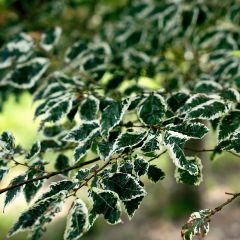
Zelkova serrata Variegata
- Flowering time May
- Height at maturity 5 m
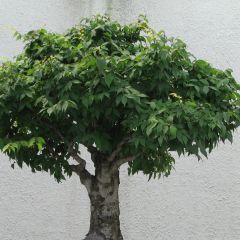
Zelkova serrata Green Vase
- Flowering time May, June
- Height at maturity 15 m
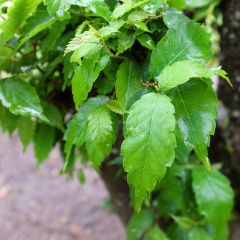
Zelkova serrata Goblin
- Flowering time May, June
- Height at maturity 1,20 m
Discover other Zelkova
View all →Available in 2 sizes
Available in 1 sizes
Available in 1 sizes
Available in 1 sizes
Planting a Zelkova
Where to Plant?
The zelkova is a robust and adaptable tree that can be planted in many regions and soil types. However, for optimal growth, it is best to plant a zelkova in a sunny or partially shaded location, in well-drained and fertile soil.
The zelkova can tolerate a wide range of soil pH levels, but it prefers slightly acidic to neutral soils. Avoid planting the zelkova in highly alkaline or saline soils.
The zelkova is resistant to urban conditions and can be planted in urban or industrial areas where pollution levels are high. It is also a disease- and pest-resistant tree, making it popular for parks and public gardens.
It is important to choose a location where the zelkova will have enough space to grow. Ensure the tree is planted at an appropriate distance from buildings, other trees, and infrastructure to avoid long-term damage.
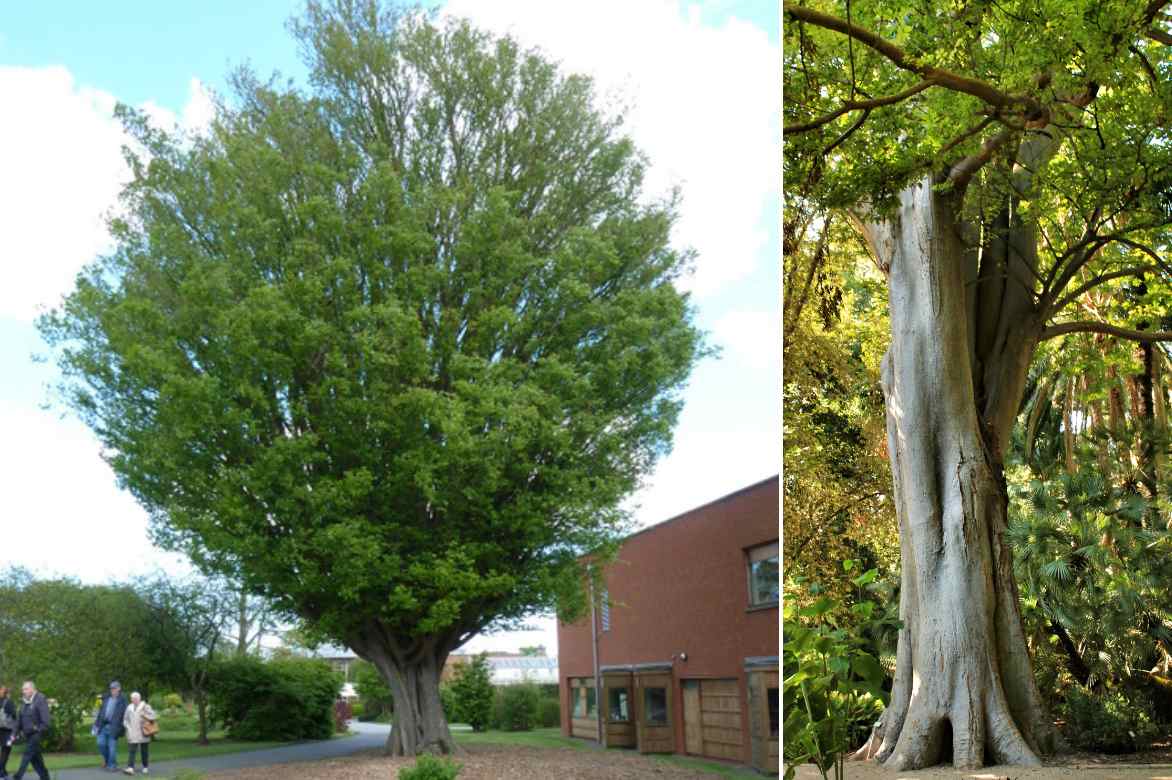
Zelkova carpinifolia (© Wendy Cutler)
When to Plant?
The best time to plant a zelkova is during the dormancy season, i.e., in late autumn or early winter, when the tree is dormant and the soil is not frozen.
How to Plant?
- Prepare the soil: weed the planting area and loosen the soil with a fork or spade. If the soil is heavy or clayey, improve it by adding compost or manure to enhance its structure and fertility.
- Dig the planting hole: dig a hole two to three times the size of the root ball of the zelkova. The bottom of the hole should be slightly wider than the root ball to allow the roots to spread easily.
- Place the tree in the hole: gently remove the tree from its container and place it in the planting hole. Ensure the top of the root ball (the collar) is level with the soil.
- Fill the hole: pour the loosened soil around the root ball to fill any gaps. Lightly firm the soil to remove air pockets.
- Water thoroughly: water the tree generously immediately after planting to help establish the roots and eliminate any remaining air pockets between the soil and the roots. Keep the soil moist for the first few weeks after planting.
- Protect the tree: shield the tree from damage caused by animals or weather by installing a fence or stake. Avoid compacting the soil around the tree to prevent root damage.
The maintenance of a Zelkova
Watering
Watering is a vital aspect, especially for young trees. During the first few years, ensure the soil remains slightly moist, without saturating it. Once established, the Zelkova serrata tolerates drought well but appreciates regular watering during periods of intense heat.
Fertilisation
Fertilisation contributes to vigorous growth. Use a balanced fertiliser (NPK: 6-4-4, for example) in spring to stimulate the development of new leaves. Additional fertilisation in autumn supports the tree’s health during winter.
Pruning
Pruning, if necessary, should be done carefully. Remove dead, diseased, or crossing branches to promote good air circulation and adequate light penetration. Pruning is best done in late winter, before the onset of budding.
Protection against cold
In winter, young trees may require protection against cold and frost. Mulching around the base of the tree helps maintain soil temperature and preserve moisture.

Foliage of a Zelkova serrata (© Olive Titus)
Diseases and potential parasitic issues
Trees of the genus Zelkova, although resistant to many diseases and parasitic organisms, are not entirely immune to certain issues. Here are the main health problems that can affect Zelkova trees:
- Dutch Elm Disease: Although less susceptible than other elms, Zelkova can be affected by this fungal disease transmitted by beetles. It causes wilting and death of branches. Rigorous monitoring and control of the insect vectors are essential for prevention.
- Anthracnose: This fungal disease causes brown or black spots on the leaves, which can lead to premature leaf drop. It typically develops in humid conditions and can be controlled by ensuring good air circulation and applying fungicidal treatments if necessary.
- Root Rot: This can occur if the tree is planted in poorly drained or overwatered soil. Prevention is the best strategy, ensuring good drainage and avoiding excessive watering.
- Aphids: These small sap-sucking insects can infest the leaves, causing deformation and the production of honeydew. They often attract ants and can encourage the growth of sooty mould.
- Scale Insects: These parasitic organisms attack the leaves and branches, feeding on the sap and weakening the tree. They are harder to eliminate and may require repeated treatments.
- Cankers: Bacterial or fungal infections can cause cankers on the trunk and branches. These appear as areas of dead tissue and can significantly weaken the tree.
- Powdery Mildew: A fungus causing a white powdery coating on the leaves. It is generally more of an aesthetic nuisance than a real danger to the tree, but it can reduce the tree’s vigour if the infestation is severe.
To protect Zelkova trees from these issues, it is recommended to maintain good garden hygiene, perform regular pruning, and ensure appropriate watering and fertilisation.
Propagating a Zelkova serrata
How to combine this tree?
Combining the Zelkova serrata, or Japanese Elm, with other plants in your garden can create a harmonious and aesthetically pleasing space. To achieve this, it is important to choose plants with similar needs in terms of sunlight, watering, and soil type.
Perennials such as Hostas, with their broad leaves, offer an interesting contrast under the canopy of the Zelkova. They thrive in well-drained soil and can tolerate the partial shade created by the tree. Astilbes, with their feathery blooms, add texture and colour beneath the Zelkova. They flourish under similar soil and light conditions. The Pachysandra terminalis, a shade-tolerant ground cover, can form a lush green carpet under the Zelkova, creating a natural woodland effect.
Bushes like Azaleas and Rhododendrons, which prefer slightly acidic to neutral soil, can harmonise beautifully with the Zelkova. Their spring flowering provides a colourful contrast. Hydrangea macrophylla and serrata are also excellent choices, with their large flowers adding colour and texture in summer.
Finally, some spring bulbs such as daffodils, grape hyacinths, and tulips can be planted around the Zelkova for a burst of colour in spring.

Surrounding the Zelkova serrata: Astilbe arendsii ‘Erika’, Hydrangea serrata ‘Kiyosumi’ (©Peganum), Pachysandra terminalis, and azalea
Anecdotes
- A link to the past: Zelkovas are often considered “living fossils”. They are closely related to elms, but unlike many elms, Zelkovas have survived the outbreaks of Dutch elm disease that decimated elm populations across Europe and North America. Their resistance to this disease makes them particularly valuable as witnesses to ancient landscapes.
- Hiroshima survivors: An astonishing fact concerns the Zelkova serrata that survived the atomic bomb in Hiroshima in 1945. Despite the massive destruction, several of these trees not only survived the explosion but continue to thrive today. They have become symbols of resilience and renewal, inspiring people around the world.
- An ancient currency: In some regions of Georgia, Zelkova wood was so valuable that it was used as a form of currency in antiquity. Its robustness and beauty were highly prized, making Zelkova wood a precious resource for trade and transactions.
- A star in Asian gardens: The Zelkova is a traditional element in Japanese and Chinese gardens. Due to its elegant shape and ability to be pruned, it is often used in the art of bonsai. Some Zelkova bonsai are centuries old and are considered true works of art, reflecting the patience and skill of their cultivators.
To go further
- Discover all our Zelkova in our online nursery.
- Rare, common… these are relatively subjective terms. But what exactly is a rare plant?
Frequently asked questions
-
Is the Zelkova suitable for bonsai cultivation, and if so, what are the tips for beginners?
The Zelkova, particularly the _Zelkova serrata_, is indeed very well suited for bonsai cultivation. Its ability to withstand pruning and its naturally graceful habit make it a popular choice among bonsai enthusiasts.
To start with a Zelkova bonsai, it is important to understand a few key principles that will guide its care and development. Zelkovas thrive in a well-draining mix, typical for bonsai. They prefer slightly moist soil, but it is crucial to avoid overwatering, which can lead to root rot.
Finally, the positioning of the Zelkova bonsai is vital. It requires a bright spot with indirect sunlight. Protecting the tree from extreme temperatures and drafts is essential, especially in winter.
-
Can I grow a zelkova in a pot?
Growing a Zelkova in a pot is entirely possible and can even be an excellent option for those without a large garden or who wish to add a touch of elegance to their outdoor spaces, such as patios or balconies. There are even dwarf cultivars of Zelkova, such as Zelkova serrata 'Goblin'.
-
What is the growth rate of a Zelkova and how tall can it grow?
The growth rate of the Zelkova varies depending on several factors, such as environmental conditions, soil quality, watering, and fertilisation. Under ideal conditions, a Zelkova can grow quite rapidly, especially in its early years, adding significant height each year.
In terms of final height, the Zelkova can reach impressive dimensions. A mature Zelkova can typically reach a height of 15 to 30 metres, or even more under optimal conditions. This vertical growth is accompanied by a corresponding expansion of the canopy, which can become quite wide, providing abundant shade and dense foliage.
-
Can the Zelkova tolerate urban conditions, such as pollution and soil compaction?
The Zelkova is renowned for its remarkable tolerance to challenging urban conditions, making it a preferred choice for landscaping in cities. Its ability to withstand urban environmental factors such as air pollution and soil compaction is one of its most appreciated characteristics.
- Subscribe!
- Contents
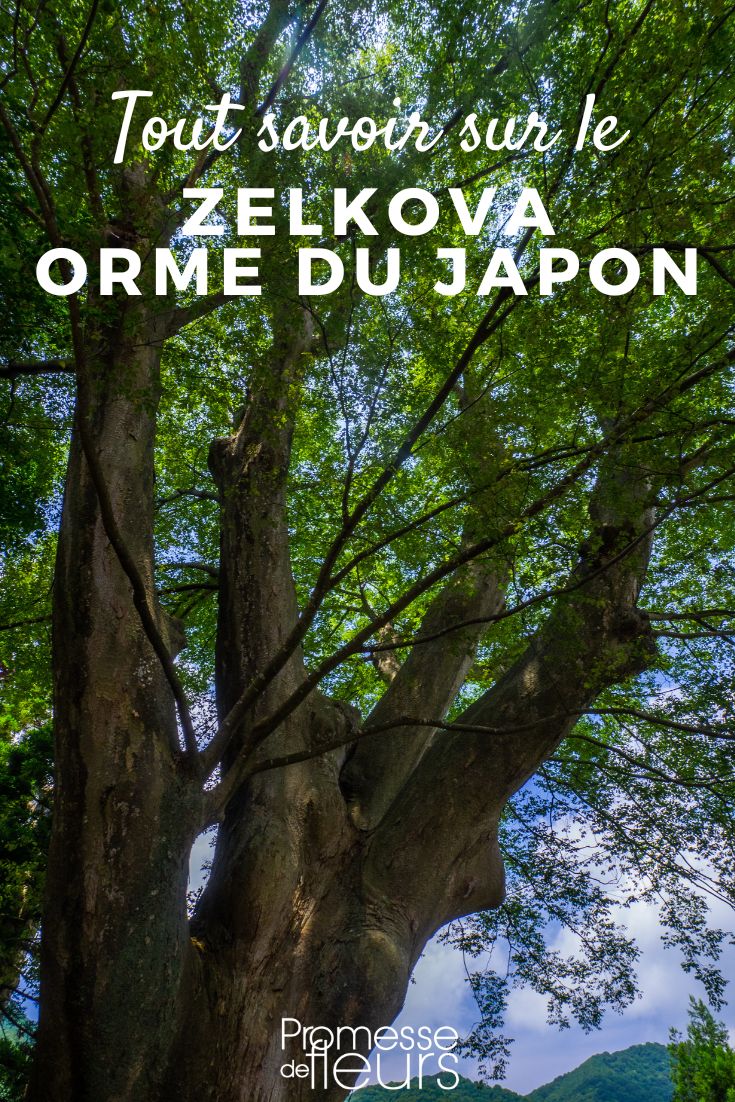



































Comments